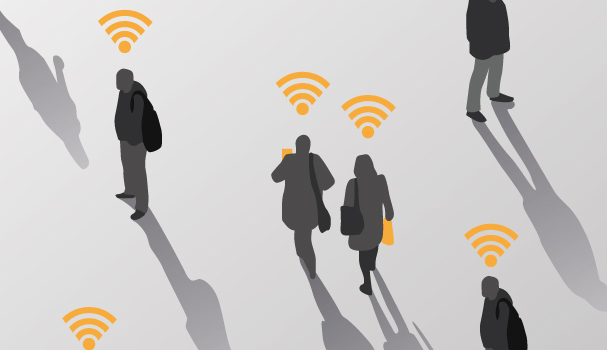Analysts predicted that something called the ‘internet of things’ (IoT) market will be worth $290bn in 2017. That’s just three years away, and that’s a lot of money. So what are these things?
The internet of things is when an object is connected to the internet. As computer power shrinks, billions of everyday gadgets can now communicate, from fridges to parking meters to thermostats.
Last month, Google bought a company called Nest – which makes internet-enabled (and beautifully-designed) thermostats and smoke- alarms – for $3.9bn. Nest’s products are different from much of the competition in that they are connected to the internet as well as to your smartphone. This allows them to send status information and receive instruction remotely as well as communicate with each other to enhance their ability, the best example being that if the smoke detectors pick up carbon monoxide warnings they tell the thermostat to turn off the boiler since that would be the most likely source.
This makes it a prime piece of technology to help Google in its quest to understand how people live and create the connected home. At the time of the acquisition, jokes surfaced that you’d know your house was on fire as you’d be getting Google ads for fire extinguishers.
Joking aside, the rise of the internet of things creates massive opportunities for business to shape the consumer experience to unprecedented levels.
How will it affect your life?
The internet of things will make the start of your day much smarter. In the home, a connected alarm clock can trigger your coffee machine and lights and then temperature and power will be lowered when your car leaves your driveway. As you’re driving to work, your car will detect your journey based on real-time traffic updates, while finding and reserving a car parking space, paid with your smart wallet. Meanwhile, the city’s municipal systems will ensure that you’re being directed to a parking bay that reduces congestion in the rush hour and pollution in sensitive areas.
However, like any new frontier, there are issues which must be addressed before the IoT becomes more widely accepted. Data privacy concerns and security problems can make all the advantages disappear quickly. Many of the early IoT devices have proven to be rushed technology using off-the-shelf software containing security holes or functionality which should have been disabled. The best example of this is a recent survey of spam email which found that spammers have been using fridges and other household items which are connected to the internet to relay their messages since they had email server software built in but no security enabled.
All of this sounds very Minority Report and futuristic, and it’s easy to see how the likes of Google and Apple could profit from this trend. But what about your business? Wouldn’t it be great to be able to apply these benefits?
Introducing beacons
We’ve been experimenting with beacons as part of the ongoing R&D activity at my company Techdept. Beacons or iBeacons (as Apple has named their version of the technology) are a piece of location-based technology. The beacon itself is a small piece of hardware, around the size of a matchbox, that’s placed in a specific location. The beacon transmits a signal, the strength of which indicates your distance from it. If your device knows the location of three or more beacons it can ‘micro-locate’ your position within a few centimetres. A signal can be detected from up to 70 metres (200 feet) away.
While not strictly an ‘internet of things’ technology, beacons are widely available today and can be used to allow you to act like a bigger business, profiting from the kind of world I described above. How? By employing interconnected devices which let you create a more personalised experience and which also give you the opportunity for real-time customer insight and feedback. Those with an enabled device (like an Apple iPhone 4s and above, or Samsung Galaxy) don’t need to take any actions to receive instant transmissions when they walk through the door.
Beacons are the most direct way for you to enhance the experience for your customer by letting objects talk to each other. This can be in a retail setting, but it can also be used to add depth of information (in an art exhibition), or target content based on geographical locations (for tourists in a city centre).
What’s for sure is that the future internet is going to be more and more focused on the things around us.
How could you employ beacons in your business?
‘The Five-Star Coffee Company’
We all love a morning cup, but imagine a new start-up that promises to deliver you only a ‘five-star’ coffee experience. Here’s how beacons could potentially be used to enhance its business:
The Five-Star Coffee Company is aiming to deliver on its mission to serve the finest coffee in town by personalising the customer experience. During its launch week, it is offering a free coffee to anyone that has downloaded its app.
Those with the app installed will be instantly recognised by the beacon installed above the shop door. This means that the coffee shop owner knows of their arrival and usual preference of coffee. There may even be an ‘app owner’ priority queue or seating area. The app can stamp a virtual loyalty card or offer a promotion.
Upon leaving the shop, the beacon is again alerted and triggers a response to the customer asking for feedback, from one to five stars. Anything less than a five-star response would be sent to the shop owner. Specific messages are sent to anyone with a ‘three-star’ experience, inviting them back for a tasting and providing the opportunity to give feedback on how to improve the service.
This experience is socialised with the ability to upload a photo of your perfect cup to your Facebook, Twitter or Instagram account. the ability to upload a photo of your perfect cup to your Facebook, Twitter or Instagram account. ![]()
Share via:








































